Genre: Sports Developer: Namco Publisher: Namco Players: 1-2 Released: 1991
Baseball video games really came into their own with the launch of the NES. Not only were the third generation of consoles ready to deliver more broadcast style presentation and accurate gameplay, but they also were capable of giving us actual players. Namco’s much beloved R.B.I. Baseball set the blueprint for much of the genre, an early hit which carried an official MLBPA license so that the fat guy over the plate was a real MLB fat guy, even if there was nothing to distinguish him from all the other guys save his name and stats. R.B.I. Baseball was more than just an MLBPA license, though — it was baseball. No more struggling with odd player mobs in the Odyssey 2’s Baseball! or looking at a handful of flickering sprites in Atari’s Homerun. The NES let baseball swap out its squares for actual balls, put the correct number of people on the field, provide proper inning counts, and give us the crack of the bat. We got authentic animation which let batters actually swing instead of looking like they were toggling some science project diode. Namco redefined what a video game baseball game could be. It’s no wonder why so many baseball games from this era left such an indelible impression on players; Baseball Stars remains my personal favorite baseball game, and many fans still cherish Bases Loaded, Baseball Simulator 1.000, and others as well. The late ’80s truly was the golden age for baseball, both real and video game.
Considering how much of an impact R.B.I. Baseball had on fans and the genre, it’s rather unusual that Namco hasn’t more of a presence in the west since those 8-bit days. It certainly didn’t help that Namco’s franchise attained success under Tengen, which licensed Namco’s original Family Stadium to create its NES hit. Americans would remain oblivious to the decade plus of World Stadium games to follow. Tengen took its R.B.I. name and ran it into the ground, opening the franchise to a carousel of developers which steered the game into a more realistic mold where it couldn’t compete. Despite the series’ advancements in play and graphics, baseball fans still cling to the original just as football fans do the original Tecmo Bowl. Part of their appeal is surely based on nostalgia, but it’s also nice to take a break from the more complex modern games and just press a button to swing a bat without having to worry too much about analog sensitivity, wind speed, the friction of the batter’s cleats, and whatnot.
Kyuukai Douchuuki harkens back to those simpler days, which shouldn’t surprise anyone given its age and seeing how the game is a Namco developed baseball title in the mold of World Stadium/R.B.I. While the language barrier will leave most Westerners at a loss when it comes to comprehending much of the text apart from the English baseball terms, it’s nothing to start up a game and play ball. The only oddity is how runners advance with the B-button and retreat with the C-button, which is fine, just unexpected. D-pad still moves the batters in the box, C swings, B bunts, and pitchers unleash fastballs, drop balls, and depending upon the direction held while pitching. The drop balls in the game are pretty weak, just a mild version of a normal direction-less pitch (, while the curve balls fire out at a ridiculously wide arc and are by far the game’s best pitch. It’s tough to connect when a pitcher can send a ball from the farthest edges of the batter’s box and can still cross the plate. Granted, that’s what a good curveball is supposed to be, but the exaggerated perspective makes it so much more effective than the other pitches.
You can’t abuse the special pitches too much as pitchers become winded quickly, each good pitch taking a bite out of your on-screen stamina meter. There’s a cute animation of them on the mound panting to indicate when they’re low on stamina, and tired pitches come out slow, straight, and gift wrapped for batters. You can and will have to stumble through the substitution menu to rotate the bullpen to ensure solid pitching through the 9th, especially if you plan on slogging through the world tour mode. At the end of a game, the game offers an option to play a rematch, and your team’s stamina level carries over to the next game which is odd. It’s unusual to see an exhibition mode treat rematches as if they’re a doubleheader. This could very well be explained by the TV anchor who recaps each game, but any such exposition is lost if you can’t read her dialogue.
Western players likely won’t also be able to read the names of the 38 teams included in Kyuukai Douchuuki, but most are identifiable thanks to their lookalike logos and acronyms. The game includes parodies of the Japanese Pacific and Central Leagues, but Kyuukai surprisingly has most of its roster devoted to Major League Baseball franchises: 14 teams for the American League (including the Red Sox, Cubs, and Yankees) and 12 for the National League (Phillies, Mets, and Dodgers among others). Teams are rated in four categories including an overall rating, and while I can’t make out exactly what those ratings entail (I can assume offense, defense, pitching, etc.), the numbers alone should be enough for players to at least see how they stack up when the Mets logo alone isn’t enough to tell a person which selection to avoid.
The familiarity may be fun for people considering importing the game today, but then you’re better off just sticking with R.B.I. Baseball ’94 if you’re strictly looking for this kind of baseball gameplay and presentation on your Genesis. The more realistic style and dungeonous outfield of R.B.I. ’94 may not satisfy that super deformed baseball itch, but Tengen did include enhancements with the latter R.B.I. games that I wish Namco would have implemented in Kyuukai Douchuuki. I hate how the outfielders and ball location aren’t displayed on the diamond map, something which always bugged me about older baseball games including my Baseball Stars. Kyuukai Douchuuki‘s players just don’t seem smart enough to at least be in the vicinity when a ball makes it to the outfield, and I’ve been embarrassed by a CPU inside-the-park home run since I was in no position to make a play on the ball nor throw it home in time. Fielding feels sluggish overall, and when combined with the weak arms in the outfield, the prolonged jumping and diving motions can make defense more aggravating than it should to be. I’m not crazy about how outfielders can’t dive for balls which sail just a bit behind them, choosing to launch into their jump animation instead which lets the ball get away and gives the opponent an extra base or two. The base runner windows are a nice touch, and the game feels fine until the ball leaves the diamond, at which point Kyuukai Douchuuki seems to age for the worst. I’m not looking for it to have all the bells and whistles of Sega’s fantastic World Series Baseball, but it could at least match the field play of older games such as Super League (Tommy Lasorda Baseball).
I’ve read that Kyuukai Douchuuki is a spinoff from Namco’s little known run-and-jump Youkai Douchuuki, a fact lost on me going in and something I suspect most won’t care about when considering this baseball game. The main draw is the cute graphics, unreal environments, and simple gameplay. I like being able to play baseball in a desert or on a cruise ship. It’s cute to see the little penguins trot out between innings on the ice stage, and it’s neat (but often infuriating) how the fielders slide across the icy ground. A normal field and indoor stadium round out the five environments, each with their own size and dimensions. I would like to see more variety, especially in a game as simple as this, and I wish the game had more personality. The scratchy voice samples — “Batta out!” — are nice but really expected by this point in the game, and the single jangly song which plays throughout quickly wears out its welcome. Lookalike batters and generally sparse animation might have been fine three years earlier on the NES, but time and technology had advanced enough to where Namco should have delivered more. Kyuukai Douchuuki may not be the company’s flagship baseball title, but on a 16-bit system with a few years to develop, Namco’s baseball recipe should have advanced more than it had at that point, and that perhaps is why no publisher ever sought to bring its later games West.
Namco’s Megadrive spinoff lacks both the impact its adopted Family Stadium had when it hit these shores as well as the nostalgia R.B.I. fans have to keep it in the conversation. Just three years later, R.B.I.‘s time had clearly come and gone, and Namco didn’t do enough to truly separate its game from the more realistic and better options which quickly gobbled up the market. World Stadium, and by extension Kyuukai Douchuuki, are just simple, cute baseball games with little to offer to Western baseball video game players. There’s not much here to encourage existing R.B.I. fans that it’s worth the bit of stumbling through the menus to play when there are other, better options for a serious or fantasy-geared game of baseball available on Sega’s 16-bitter and systems beyond.
SCORE: 5 out of 10

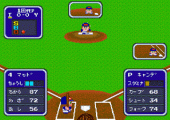
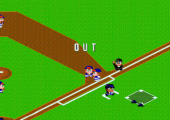
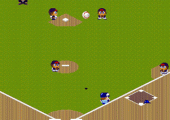
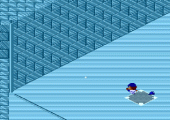
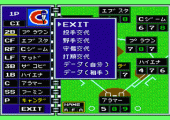
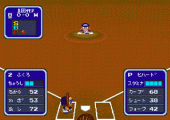
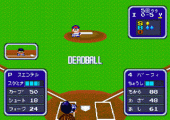
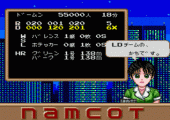
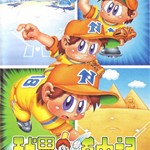
Recent Comments